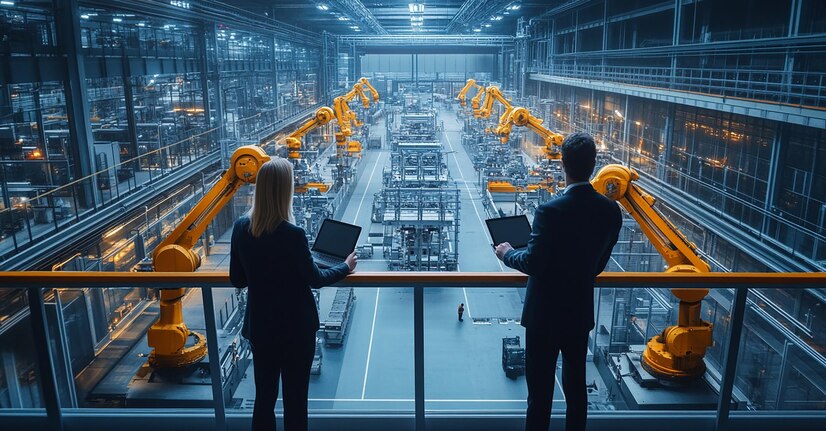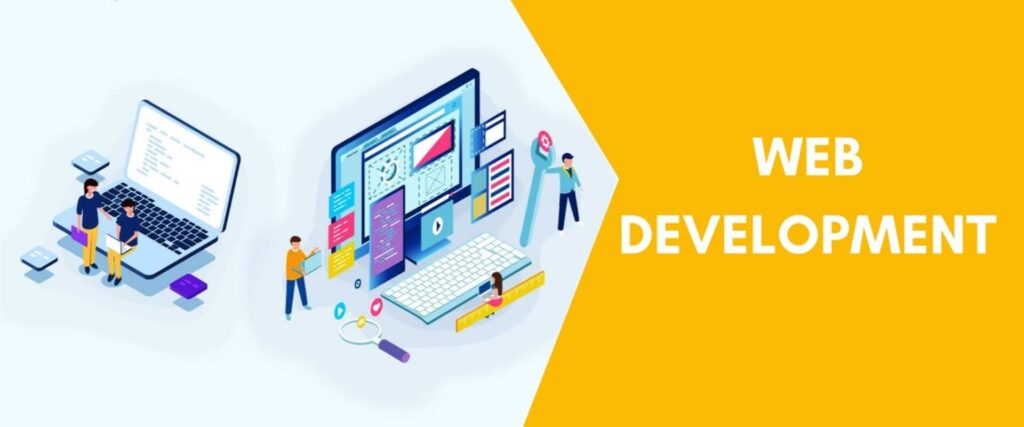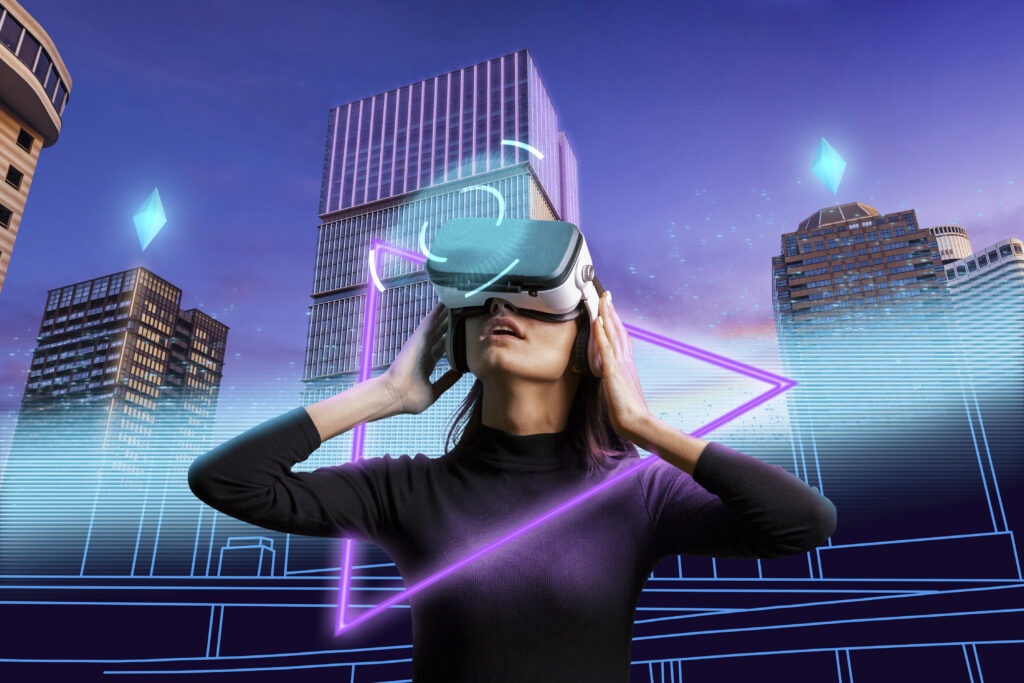
What Does the Future Hold for Artificial Intelligence in the Workplace?

Table of Contents
The future of artificial intelligence (AI) in the workplace is both exciting and uncertain. AI has the potential to transform the way we work and do business, from automating mundane tasks to providing valuable insights from large data sets. With advances in AI technology, it is becoming increasingly possible to create systems that are capable of performing complex tasks that were previously outside the scope of automation. As AI is integrated into more aspects of the workplace, it is essential to consider both the potential benefits and risks associated with its use.
In this article, we will explore the potential implications of AI for the workplace and discuss the opportunities and challenges associated with its adoption.
- The Potential of Artificial Intelligence to Revolutionise the Workplace
The potential of artificial intelligence (AI) to revolutionise the workplace is one of the most talked-about topics in the world of technology today. AI has the potential to automate mundane tasks, improve the accuracy of decision-making, and streamline operations for businesses of all sizes. As AI technology advances, it will become increasingly capable of handling more complex tasks and creating new opportunities for businesses to take advantage of.
1. AI can be used to automate mundane tasks, such as data entry and customer service inquiries, freeing up time for employees to focus on more important tasks. AI-powered chatbots can provide instant customer support, allowing businesses to quickly respond to customer inquiries without having to hire additional staff. AI can also be used for predictive analytics, allowing businesses to identify opportunities and trends in the market and make better-informed decisions.
2. AI can also be used to streamline operations and make more efficient use of resources. AI-powered automation can help businesses reduce costs by eliminating manual processes and streamlining operations. AI can also be used to improve the accuracy of decision-making, allowing businesses to make decisions based on data rather than relying on intuition.
3. Finally, AI has the potential to create entirely new opportunities for businesses. AI-powered virtual assistants can help businesses provide personalized experiences to their customers, and AI-powered robots can help businesses automate tasks that humans may find too difficult or tedious. With the right AI solutions, businesses can create entirely new products or services that would not have been possible before.
As the potential of AI to revolutionize the workplace is immense. As AI technology advances, businesses will be able to take advantage of new opportunities and streamline operations to become more efficient, productive, and profitable.
- AI-Enabled Automation: How It Can Impact Job Security
AI-enabled automation is becoming increasingly popular in the workplace due to its potential for cost savings, improved efficiency and accuracy, and increased customer satisfaction. Automation of certain processes and tasks is already being adopted by many organizations, from large corporations to small startups. As AI-enabled automation advances, it can have a profound impact on job security.
1. AI-enabled automation can reduce the need for manual labor and human intervention in certain processes and tasks. This means that positions which were once necessary may no longer be needed, as machines and technology can do the job faster and more reliably. As a result, many jobs may become obsolete and displaced workers may have difficulty finding new employment.
2. At the same time, AI-enabled automation can create new opportunities for employment. Automation can free up workers to focus on more complex and interesting tasks, and can create opportunities for new types of roles in areas such as AI programming, data analysis, and machine learning. However, this type of employment might be limited to those with specialized knowledge and skills.
3. AI-enabled automation can also have an impact on job security in terms of wages. While automation may reduce labor costs, it can also lead to wage suppression, as employers are no longer required to pay workers for certain tasks that can be easily automated. This can have a negative impact on the wages of those who remain employed, as well as those who are looking for employment.
- Enhancing Collaboration and Creativity with
1. AI-Powered Technologies: The advent of artificial intelligence (AI) in the workplace has enabled companies to unlock new levels of collaboration and creativity. AI-powered technologies can help teams break down silos, foster collaboration, and encourage creativity, allowing them to take on complex tasks more effectively and efficiently. Here’s how AI-powered technologies are enhancing collaboration and creativity in the workplace.
2. Automation of Tasks: AI-powered automation technologies can automate mundane tasks, freeing up time and energy for employees to focus on more creative and collaborative initiatives. Automation technologies can also be used to streamline processes, reducing the amount of manual work required for completing a task. This allows teams to work together more efficiently, enabling them to generate more meaningful insights and ideas.
3. Data Visualization: Data visualization tools can help teams better understand complex datasets and identify patterns and insights. By creating visual representations of data, teams can quickly identify correlations and trends that may not be easily discernible from looking at raw data. This helps teams quickly identify problems and develop creative solutions.
4. Real-Time Collaboration: AI-powered technologies can facilitate real-time collaboration, enabling teams to work together in real-time, regardless of their physical location. Real-time collaboration tools allow teams to quickly share ideas and collaborate on projects, without having to wait for decisions to be made or feedback to be provided. This helps teams make faster decisions and develop more creative solutions to complex problems.
5. Voice Interfaces: Voice interfaces are becoming increasingly popular in the workplace, as they allow teams to interact with AI-powered systems more naturally. By using voice commands, teams can quickly access data and collaborate on projects without having to manually input commands. This helps teams work more efficiently and encourages them to think outside the box and develop more creative solutions.
AI-powered technologies are transforming the way teams collaborate and create, allowing them to unlock new levels of collaboration and creativity. By automating mundane tasks, leveraging data visualisation tools, facilitating real-time collaboration, and utilising voice interfaces, teams can work together more efficiently and develop more creative solutions to complex problems.
- Exploring the Ethics of AI-Driven Hiring Practices
The increasing use of artificial intelligence (AI) in recruitment and hiring processes has raised important ethical questions that must be addressed. With AI-driven technologies, recruiters and employers have access to greater amounts of data to inform their decision-making, but this power can be abused in a number of ways. It is essential to consider the ethical implications of AI-driven hiring practices to ensure that all candidates are treated fairly and given equal opportunity.
1. The use of AI-driven technologies in recruitment and hiring processes can have a number of potential ethical implications. For example, if AI-driven systems are used to select candidates based on past performance, there is a risk that certain demographic groups may be disproportionately excluded from consideration. This could lead to a form of subtle discrimination, with certain groups of people being more or less likely to be selected for particular roles. Similarly, AI-driven systems may also be used to select candidates based on their appearance, leading to further perpetuation of unfair stereotypes and biases.
2. Furthermore, the use of AI-driven technologies in recruitment and hiring processes raises questions about the privacy of candidates. AI-driven systems are often used to collect, store, and analyze large amounts of personal data on candidates, which means that this data must be handled in an ethical manner. Employers must ensure that candidates are aware of what data is being collected and how it is being used, and that their data is kept secure and not shared without their permission.
3. Finally, it is also important to consider the impact of AI-driven hiring practices on job seekers. AI-driven systems can potentially make the recruitment process more efficient, but they may also lead to candidates feeling like they are competing against a ‘black box’ which is difficult to understand and influence. This could lead to feelings of frustration and disillusionment among job seekers, and it is important to ensure that recruitment processes remain fair and transparent.
With the continuous use of AI-driven technologies in recruitment and hiring processes can have a number of important ethical implications. It is essential to consider these implications to ensure that all candidates are treated fairly and given equal opportunity, and that their privacy is respected. At the same time, it is also important to ensure that job seekers are not disadvantaged by AI-driven systems, and that the recruitment process remains fair and transparent.
- Utilising Chatbots for Improved Customer Service
The rise of chatbots has revolutionised the way businesses provide customer service, allowing them to provide better service with increased efficiency. Chatbots are computer programs that use artificial intelligence to simulate human conversation, making it easier for customers to get the help they need quickly and efficiently.
Utilising chatbots for customer service can provide a range of benefits, from improved customer satisfaction to cost savings. Chatbots can provide personalised service by learning from customer interactions, allowing them to become more efficient over time. They can also help businesses reduce costs by automating repetitive tasks and routing customer inquiries to the correct department, saving time and resources.
For customers, chatbots can provide a more convenient way to get help. They can quickly provide answers to common questions and direct customers to the right department, saving time and eliminating frustration. Chatbots can also be used to gather customer feedback, allowing businesses to improve their services based on customer feedback.
By leveraging the power of chatbots, businesses can improve their customer service and provide a better customer experience. Chatbots can be used to provide personalised service, automate tasks, and gather customer feedback, allowing businesses to maximise customer satisfaction and reduce costs. Utilising chatbots for customer service can help businesses stay competitive in today’
- Putting AI to Work for Faster, More Accurate Data Analysis
Data analysis is the process of collecting, organizing, and making sense of data. Without data analysis, it’s impossible to make sound decisions or identify important trends. Fortunately, artificial intelligence (AI) is revolutionizing the way we process data and with AI, businesses can now analyze data faster and more accurately than ever before.
1. AI-based data analysis tools enable businesses to quickly and accurately identify trends, correlations, and anomalies in large datasets. AI can also be used to automate the process of data analysis, reducing the amount of time and effort required. With AI-powered data analysis, businesses can make decisions faster and more accurately than ever before—leading to increased efficiency and improved results.
2. AI-driven data analysis also offers a number of other benefits. For example, AI tools can help to uncover previously unseen patterns and insights in data. This can enable businesses to make more informed decisions, based on a deeper understanding of their data. Additionally, AI-powered data analysis helps to reduce the risk of human error, as AI-driven analysis is more accurate than manual processes.
3. By leveraging AI-powered data analysis, businesses can make faster, more informed decisions and capitalize on opportunities more quickly. This can give businesses a competitive edge in today’s rapidly changing markets.
So what’s the next step? To learn more about how you can put AI to work for faster and more accurate data analysis, contact us today. We’ll be happy to help you explore the possibilities and get the most out of AI-driven data analysis.
- The Benefits of AI-Assisted Decision Making in Business
The use of artificial intelligence (AI) is revolutionising the way businesses make decisions. AI-assisted decision making is increasingly being used to make decisions faster, more accurately, and with more data than was previously possible. By leveraging the power of AI, businesses can analyse vast amounts of data, identify patterns, and gain insights that would otherwise be impossible to obtain.
1. The benefits of AI-assisted decision making in business are clear. AI algorithms can rapidly analyse vast amounts of data and generate insights that can be used to make decisions quickly and accurately. This can result in improved efficiency, cost savings, and improved customer satisfaction.
2. AI-assisted decision making can also help businesses identify trends and opportunities in the market. By using AI to analyse data, businesses can quickly identify patterns that could indicate future customer behaviour or market trends. This can help businesses make decisions faster and more accurately, resulting in increased profits.
3. Finally, AI-assisted decision making can help businesses make better decisions by reducing human bias. AI algorithms can make decisions based on accurate, unbiased analysis, resulting in decisions that are less likely to be influenced by personal preference or bias.
Progressively, AI-assisted decision making is revolutionising the way businesses make decisions and by leveraging the power of AI, businesses can quickly and accurately analyse vast amounts of data, identify trends and opportunities, and make decisions with less human bias. If you’re looking to improve your decision-making process and gain a competitive edge, then AI-assisted decision making is definitely worth considering.
Ready to get started? Contact us today and see how AI-assisted decision making can help your business succeed.
- AI-Powered Automation and Its Role in Shaping the Future of Work
The future of work is changing, and AI-powered automation is playing a major role in shaping it. Automation, powered by Artificial Intelligence (AI), is quickly becoming an integral part of the workplace. With AI-powered automation, businesses are able to streamline their operations, get more done in less time, and increase efficiency.
1. AI-powered automation is being used in a variety of ways, from automating customer service tasks to streamlining the production process. AI-powered automation is also being used to help businesses analyse customer data, predict customer needs, and provide insights into customer behaviour. This type of automation helps businesses stay ahead of the competition and make decisions that are more informed.
2. The use of AI-powered automation is also helping to create new opportunities for employees. By leveraging AI-powered automation, businesses can delegate more complex tasks to their employees, freeing up their time to focus on more value-added activities. This allows employees to be more productive and efficient in their roles.
3. AI-powered automation is also helping to create new job roles that didn’t exist before. For example, AI-powered automation is being used in healthcare to automate medical diagnosis and treatment plans. This helps healthcare workers focus on providing high-quality patient care.
4. AI-powered automation is revolutionising the workplace and helping to shape the future of work. It is enabling businesses to do more with less and providing new opportunities for employees. If you’re looking to stay ahead of the competition and take advantage of the latest automation technologies, now is the time to get on board.
Take the first step towards harnessing the power of AI-powered automation and start transforming your workplace today. With AI-powered automation, you can get more done in less time, increase efficiency, and unlock new opportunities for your employees.
- Growing the Human-Machine Relationship in the Workplace
The relationship between humans and machines is becoming increasingly important as technology continues to advance. As technology advances, it’s becoming more and more critical for organisations to understand how to best utilise the benefits of a human-machine relationship in the workplace.
Not only can a successful human-machine relationship increase efficiency and productivity, but it can also help create a more collaborative and innovative work environment. By combining human intelligence with the power of technology, organisations can create a strategy that encourages collaboration and innovation, while still allowing for the use of automated processes where applicable.
1. One of the key elements of a successful human-machine relationship is the ability to identify the best possible combination of human and machine roles. This requires organisations to evaluate their current roles, processes, and objectives, as well as the skills and abilities of their human workforce. By developing a strategy that utilises the strengths of both human and machine capabilities, organisations can ensure that their workforce is engaged and productive.
2. Another important component of a successful human-machine relationship is communication. As technology becomes more integrated into the workplace, it’s important to establish clear communication pathways between the human and machine workforce. By creating a dialogue between the two, organisations can increase efficiency and accuracy, while also minimising the potential for misunderstandings.
3. The human-machine relationship is an important part of the modern workplace, and organisations must take the time to understand how best to utilise the strengths of both human and machine capabilities to create a successful working environment. With the right strategy, organisations can maximise the potential of their human-machine relationship and create a workplace that promotes collaboration and innovation.
Ready to start leveraging the power of a human-machine relationship in your workplace? Contact us today to learn more about how you can use technology and human capabilities to create a more productive and efficient work environment.
Conclusion
The future of Artificial Intelligence in the workplace is an exciting and promising one. AI technology has the potential to revolutionise the way we do business, making it easier and more efficient than ever before. As AI continues to become more advanced, it will continue to play an increasingly large role in the workplace, leading to more efficient and effective workflows, better customer service, and more efficient use of resources.
With the right investments in AI, businesses can position themselves for long-term success and reap the rewards of a more productive and efficient workplace.
Share Article:
Table of Contents


Effortless Inventory Control: Streamline Your Business with Our Customer-Centric Inventory Management Solution

Transform Your Online Presence with Premier Web Development Services in California


Related Articles

Navigating the Digital Classroom: The Future of Online Learning Management Systems

Effortless Inventory Control: Streamline Your Business with Our Customer-Centric Inventory Management Solution

